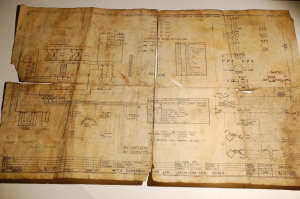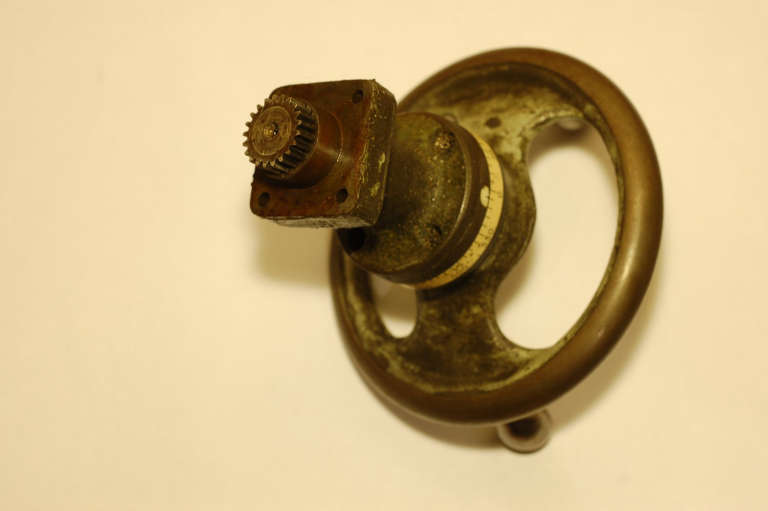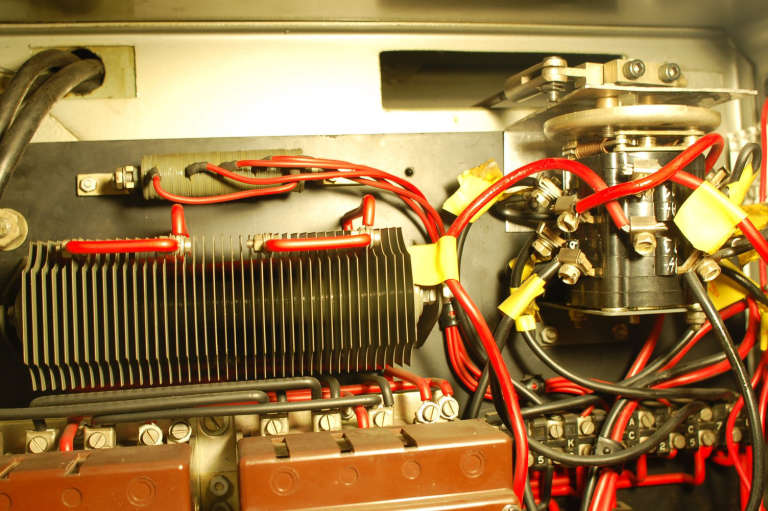
Hardinge HLV Super-Precision Lathe Restoration: Variable-Speed Drive
All Hardinge HLV and HLV-H variants feature a continuously variable speed drive to the spindle. It starts with a 3-phase, two speed squirrel cage induction motor, rated at 500 rpm and 1500 rpm nominal (less in practice, due to slip) at 50 Hz. This would be 600 rpm and 1800 rpm at 60 Hz.
A pulley with a brake drum is fitted to the motor spindle. The brake assembly is mounted just below the brake drum and pushes a cork pad against the drum. This is controlled through a solenoid (which tends to fail after some decades of use and are hard to find replacements for, but we can repair them), wired so that the brake is engaged when the spindle is not running. There is also a brake on/off switch, to free up the spindle so it can be easily turned by hand. The actual brake assembly is different, both mechanically and electrically, between the HLV and HLV-H. I will write more about HLV brake solenoid repairs in due course.A belt drives a countershaft, located above the motor and below the spindle. The two pulleys are mechanically expanding and contracting, altering the transmission ratio. On the early HLV, this expansion/contraction is controlled via a handwheel mounted in the front of the pedestal base. A mechanical indicator displays the spindle speed in a window next to the handwheel. The speed can be changed while the spindle is running, by cranking the wheel. On later models, a motor-controlled "variable speed actuator assembly" was added to take care of this, controlled via push-buttons, mounted on a "variable speed control box", usually located just above the headstock. This arrangement can be found on later HLV machines, on all HLV-H, HLV-M and HLV-EM lathes, as well as several other Hardinge models, including the DV-59, DSM-59 and TFB-H.
The spindle is belt-driven from the countershaft and only has a single pulley. What may appear to be a cone-pulley for flat belts is just a barrel assembly, carrying the single pulley along with a spindle-lock assembly, used for mounting chucks and other spindle nose accessories. When this machine arrived, the spindle lock button was held in place with blu-tack! Upon removing the blu-tack, the button was found to be dangerously out of adjustment, locking the spindle unexpectedly by gravity alone! It took all of five minutes to remove, lubricate, refit and adjust properly, but it took about an hour to fully remove all traces of blu-tack.
I should probably point out that if you feel you need to use blu-tack on a precision lathe, then you are not adequately qualified to do any work on it. Just leave it as it is. Too many fine machine tools and other rare and valuable equipment have been ruined by ego-trippers who thought they could fix it all by themselves.
The single most important skill a good engineer must possess is to know when to step back when something proves beyond their own abilities and call in someone suitably skilled and equipped to complete the job properly, without risking damage. It is not a sign of weakness to admit that you need help, but rather a sign of being experienced and mature enough to know your limits.
Fortunately, all the horrible bodges on this machine thus far have proven reversible.

An electrical diagram (looking more like an ancient pirate map showing where the treasure is hidden) came with the machine. Despite its condition, it was easy to follow, since the HLV electrics are quite simple.
One important difference between the USA and European versions is that the USA version uses a transformer wired between two phases, to power the control electronics, and does not require a neutral connection to the supply. The European version does not use a transformer and instead takes the supply for the control electronics between one phase and neutral, requiring a 5-wire connection to the electrical supply (3 phases, neutral and ground). If a three-phase supply with neutral is not available, it is simple matter to modify the electrics to work with any available arrangement.
Hardinge was also supplying custom versions with electrics wired to customer specifications, so it is very likely that other arrangements may be encountered. As such, do read the manual and inspect your machine to verify what is going on, before proceeding. It is, of course, entirely possible to convert an HLV to your requirements, if necessary, to run on a different type of supply than the one it was originally designed for. The motor and variable speed drive, however, work exceptionally well, so I would recommend keeping these intact.










